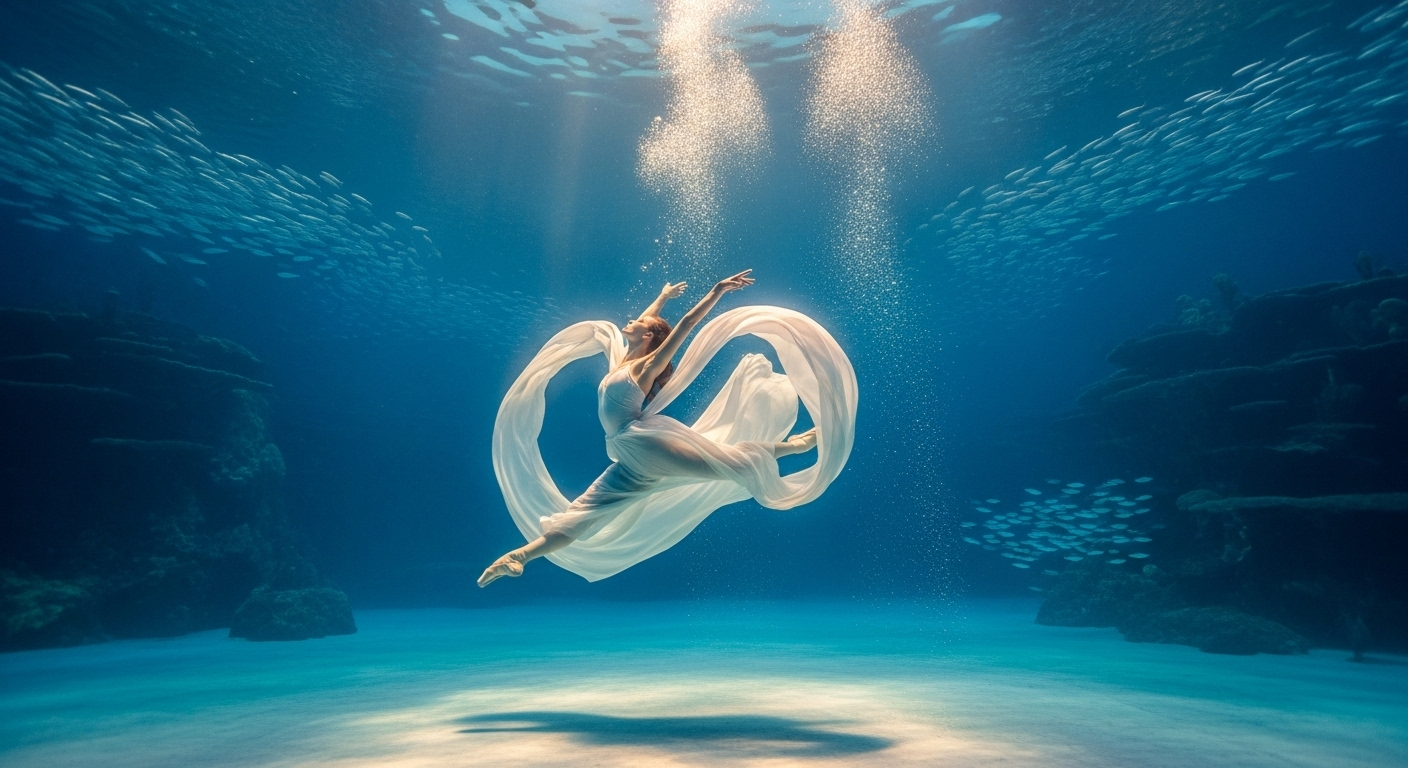The Enigmatic World of Underwater Ballet
In the depths of aquatic performance art, a captivating and ethereal form of expression has emerged, challenging the boundaries of traditional dance and aquatic sports. Underwater ballet, a mesmerizing fusion of graceful choreography and aquatic acrobatics, has begun to capture the imagination of audiences worldwide. This article delves into the enigmatic world of underwater ballet, exploring its origins, techniques, and growing influence on the global arts scene.

The Origins of Underwater Ballet
The roots of underwater ballet can be traced back to the early 20th century, with the rise of aquatic entertainment in Hollywood films and elaborate water shows. However, it wasn’t until the late 1990s that underwater ballet began to emerge as a distinct art form in its own right. Pioneering artists and choreographers, inspired by the possibilities of aquatic movement, began experimenting with underwater performances, gradually refining techniques and developing a unique aesthetic language.
Mastering the Aquatic Stage
Performing underwater ballet requires a unique set of skills that go beyond traditional dance training. Dancers must not only possess exceptional breath control and swimming abilities but also learn to move gracefully in an environment that offers both resistance and buoyancy. Choreographers face the challenge of creating routines that are visually stunning when viewed through water while ensuring the safety and comfort of their performers. Specialized equipment, including waterproof makeup and costumes designed to move fluidly underwater, play a crucial role in bringing these aquatic visions to life.
The Visual Spectacle
One of the most striking aspects of underwater ballet is its visual impact. The interplay of light, water, and movement creates a surreal and ethereal atmosphere that captivates audiences. Advanced lighting techniques and underwater camera technology have allowed for increasingly sophisticated productions, with some performances incorporating elaborate sets, props, and even holographic projections. The result is a multisensory experience that blurs the lines between dance, visual art, and immersive theater.
Global Recognition and Artistic Impact
In recent years, underwater ballet has gained recognition in the global arts community, with performances featured in prestigious venues and festivals around the world. Major aquariums and water parks have begun incorporating underwater ballet shows into their offerings, exposing the art form to wider audiences. The unique aesthetic of underwater ballet has also influenced other artistic disciplines, inspiring photographers, filmmakers, and visual artists to explore the creative possibilities of subaquatic movement and form.
Challenges and Future Directions
Despite its growing popularity, underwater ballet faces several challenges as it continues to evolve. The physical demands of the art form limit the duration of performances and require extensive training and conditioning for dancers. Additionally, the specialized equipment and venues needed for productions can make underwater ballet a costly endeavor. However, as technology advances and interest in the art form grows, many practitioners are optimistic about its future. Some are exploring the integration of virtual and augmented reality technologies to create hybrid performances that push the boundaries of aquatic artistry even further.





